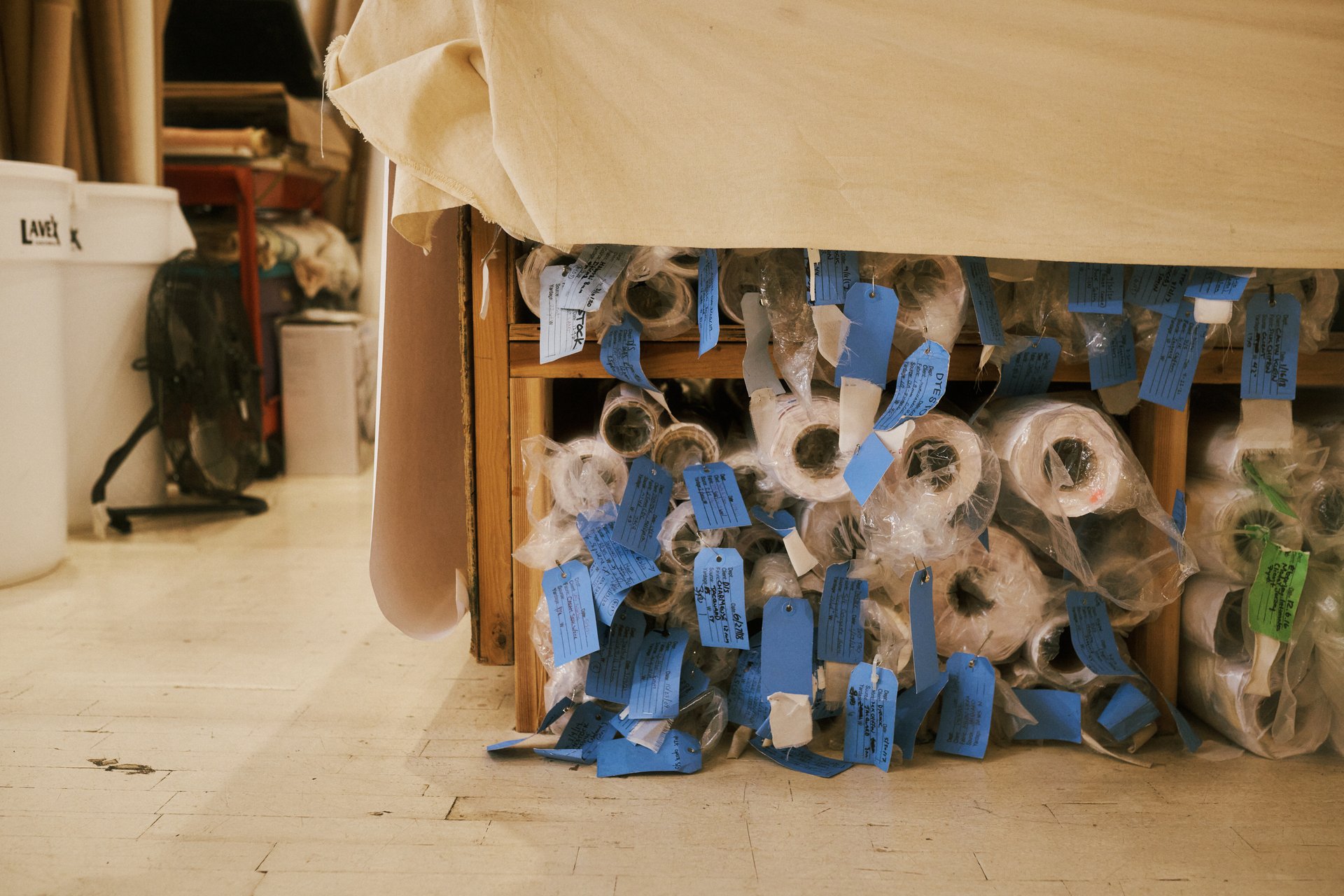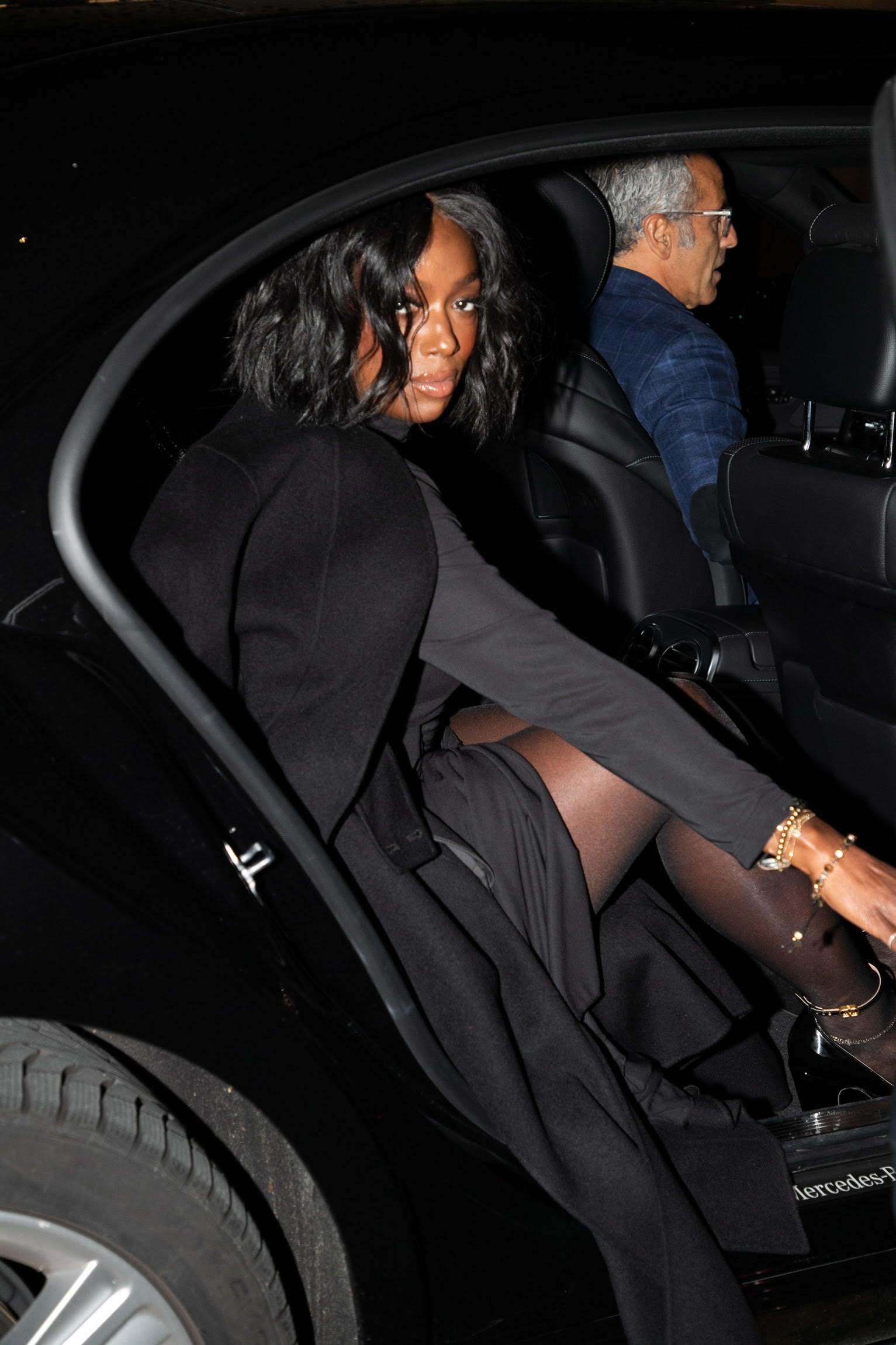The 2010s: Preserving Domestic Manufacturing
November 28, 2022
Sharon Edelson


As the millennium began to take shape, the fashion industry, like most industry, globalized, and designers looking to manufacture their products were faced with many competitive options, most from overseas, including, but not limited to, China and Southeast Asia. This new reality began to threaten domestic manufacturers from New York to Los Angeles.
The CFDA’s Fashion Manufacturing Initiative, launched in 2013 in partnership with Andrew Rosen and FMI’s premier underwriter Ralph Lauren and in collaboration with the New York City Economic Development Corporation, to support and promote local fashion manufacturing, gives grants to factories under the FMI Grant Fund to upgrade machinery and technology and facilitate training, connect designer and factories via a Production Directory, and has been crucial in keeping New York City production lines humming.
There are myriad benefits to manufacturing apparel domestically, from working with factories that do small runs – especially important for young designers who may not have the quantity requirements needed to produce overseas – to the nimbleness that comes with working locally and being able to amend a design quickly without having to communicate with a factory long distance. Then there are the shipping charges.
Atelier Amelia’s owner, Zhu Ru Chen, received FMI grants in 2018 and 2019. “They’ve been extremely helpful, especially for a woman-owned small business like ours,” Chen said of the cash infusion. “We started the business with the idea of supporting emerging designers who were launching a brand made in America. They start out with small quantities.”
Chen has her sewers finish a garment from beginning to end. That way, the factory can run small batches. If it’s a simple style and the designer orders 20 or 30 units, one person can do the job. For more complicated designs with over 100 units ordered, Chen pairs two or three people together. “That’s how we operate to achieve these small quantities and it’s been working well for us.”
Chen, who started the business in 2016, specializes in knits and swimwear. In the beginning, she didn’t have the funds to buy special machines and was making patterns by hand. “It was really time consuming and therefore, difficult,” she said. “In this industry, everything is based on labor. The longer it takes to work on something, the more it will cost. We were trying to find ways to really be efficient and find a better way to do things. Having the right machines is everything. The FMI program helped us get a zigzag machine and a flat machine to do the type of garments we wanted to do because there was a demand for them.”
Maria Cornejo, who manufactures 85 percent of her collection in New York – only shoes and some knitwear is made oversees – works locally, in part, to reduce the brand’s carbon footprint. Different factories have different strengths, and designers look for the best fit. A sample is just a subway ride away for designers working with local factories, and that brings peace of mind. “The main thing is the immediacy of it,” said Cornejo. “It can be more expensive to produce a collection in New York due to higher labor costs, but it’s a tradeoff.”
“As we prepare to produce a collection, our production team will assess what’s being produced and where it can be made the best. That’s first and foremost our priority – who’s going to make this the most beautiful jacket,” said Wes Gordon, creative director of Carolina Herrera. “We have several partners in New York that are the best at what they do.”
The fashion house has special items made in small quantities, including the “wow” finale looks of a Carolina Herrera runway show. “The gowns are really a triumph of handwork and time and skill and craftsmanship,” Gordon said. “It’s a constant communication between our team and the factories throughout the entire process. Domestic manufacturers can create extraordinary things in a way that can’t be done overseas. Having the ability to be nimble, even if it’s not hitting a certain production minimum is very important,” Gordon said. “It’s something that’s incredibly important for young designers and young brands. I can speak to that having been one myself with my own collection. Were it not for the Garment Center, it would be an enormously daunting and complex undertaking to try and get samples.”
A recipient of the inaugural FMI grant in 2013, In Style USA, a 10,000-square-foot facility, was capable of churning out 30,000 to 40,000 pieces per month at its peak, prior to the pandemic. Pauline Lock, product development and bulk production manager of In Style USA, said the factory was able to by new Merrow machines when it received the FMI grant. “The machines take a toll, especially pre-pandemic when they were running a lot faster,” Lock said.
“For us to make these huge investments on our own may or may not have happened,” Lock added. “The FMI, obviously, is a grant, but there’s a portion of it that’s coming out of our pocket. They don’t pay 100 percent for a machine because we need to be vested as well, which is totally understandable. Through the program, we were able to provide more services to our customers and bring in software for grading and marking for pattern-making.”
Sunrise Studio’s managing partner, Peter Chan, said the FMI’s two grants – a matching one for $100,000 in 2015, and $200,000 in 2018, two-thirds funded by the organizations – were used to buy new machines and employee training. “We used to have 80 to 90 employees,” said Chan. “We’ve downsized to 40 to 50 due to the pandemic. We had to slim down to survive.
“We’re not competitive with imports, so we have to focus on better-priced products,” Chan said, noting that major clients include Veronica Beard, Nili Lotan and sometimes The Row. “On the other hand, a lot of skilled workers retired. We don’t have sufficient new blood in the industry to join the work force. The CFDA has been trying a lot. The thing is, unless we have really breakthrough technologies like robotic sewing, the industry will continue to shrink drastically.”
Since the Fashion Manufacturing Initiative’s inception, over $4.6 million has been invested to NYC-based fashion manufacturers and their workforce through the FMI Grant Fund, FMI x A Common Thread, and the Workforce Relief Collective, among others with nearly 3,200 jobs impacted over the past nine years.
The CFDA also expanded its overarching domestic manufacturing network throughout the United States. From past retail collaborations with Banana Republic in Los Angeles to a Barneys New York capsule in New York, to growing engagements alongside national organizations in local markets including the Industrial Sewing and Innovation Center (ISAIC), Urban Manufacturing Alliance and the Garment Workers Center. The CFDA’s Production Directory also expanded in 2017 to become a national database of fashion manufacturers in 2017, bringing more than 320 resources to the American designer community.
“I’m very happy that the CFDA [and the NYCEDC] have been giving grants and helping people keep production in the United States,” said Cornejo. “In this day and age, it’s good to know where your clothes are made.”
Photo by Gregory Wikstrom/@gre.gor.y i

